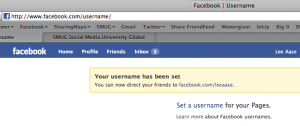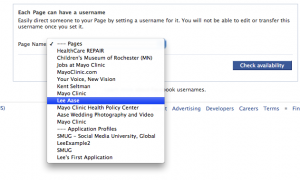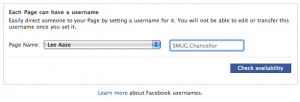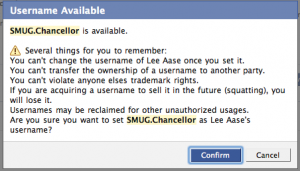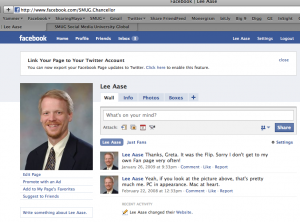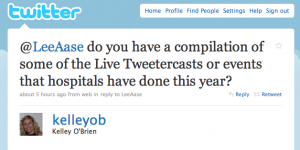Jackie Fox (@jfoxhdr), who blogs at Dispatch from Second Base, writes to ask:
I haven’t noticed this in SMUG and was hoping you might have some advice on how to mesh our professional and personal activities online. I’m beginning to suffer from a bit of an identity crisis. My professional profile is on LinkedIn and my personal profile is on Facebook (and professional on Twitter but only for monitoring purposes). That seems fairly clear-cut but what if I would like to join LinkedIn groups as a “civilian?” I don’t think the engineering company I work for is well served by seeing women’s healthcare issues on my LinkedIn profile. I guess I could list breast cancer affiliations including my blog as personal interests on my work profile but that seems just a tad weird. Or is it? Any advice from you or how others handle it would be more than welcome. Even sending you this message I had to stop and think for a second about which way to identify myself. I chose personal and I think that made sense. But yikes! If I were writing to Ann Landers I would sign this “Confused.” Thanks.
Jackie was quick to add “jfoxhdr is my Twitter name but just a reminder I have never tweeted. I’m on there primarily to monitor certain news items and follow people for work (ENR and a couple of environmental reporters) and for fun (you and Stephen Colbert.)”
Answer:
Dear “Confused”…er, I mean Jackie. First, I’m honored to be in your “for fun” group in Twitter, along with Stephen Colbert. How cool is that?
Second, don’t apologize for the way you use Twitter. It’s perfectly fine to be in “Listen Only” mode if that works for you. Much better than being a spam machine.
Now to your main question:
I really think it comes down to Integrity, which my handy Mac Dictionary app defines as:
1 the quality of being honest and having strong moral principles; moral uprightness : he is known to be a man of integrity.
2 the state of being whole and undivided : upholding territorial integrity and national sovereignty.
I personally don’t think it’s a problem for your business and professional colleagues to know that you’re concerned about breast cancer and active in advocacy related to it.
Doing this advocacy on work time wouldn’t be good. But knowing that you have this interest helps your clients, customers and colleagues know you better. And if all your LinkedIn posts were about non-work passions, that probably would indicate that you’re really not that interested in your engineering work.
If you have clients to whom you are “selling” it’s better for them to get to know you as a person, not just as a disembodied voice at the end of the phone line. That makes it less likely they would drop your company for a $5 an hour discount they might get from a competitor.
If you’re involved in a jihadist group, that would be a different story. Probably best to keep that off your LinkedIn profile, because while it might not bar you from boarding a U.S.-bound plane from Amsterdam, it likely would turn off potential business associates.
But for almost any other kind of personal interest, it just comes down to proportion. Don’t go overboard in advocating for a cause so that’s all your professional colleagues and customers see.
In summary, I would just say: “Don’t be a Sybil.” Be one integrated personality (and online persona).
Be yourself.
How about the rest of you? How would you advise Jackie?
